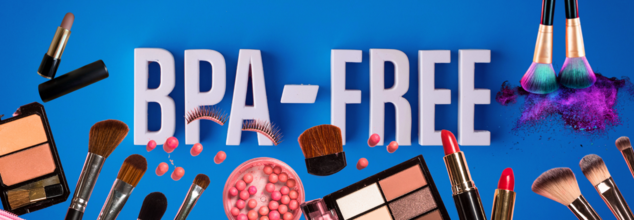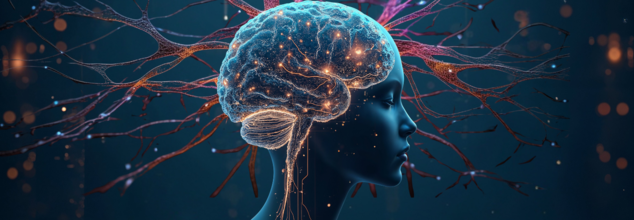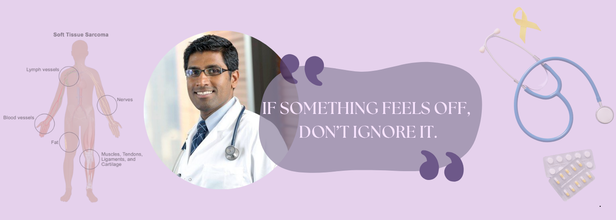- Health Conditions A-Z
- Health & Wellness
- Nutrition
- Fitness
- Health News
- Ayurveda
- Videos
- Medicine A-Z
- Parenting
- Web Stories
BPA in Lipsticks? Doctor Shares How Your Makeup Bag Could Be Full Of Endocrine Disruptors

For many, swiping a bold red or a soft pink might just be about putting on some makeup and heading out. But have you ever stopped to think about what else you are putting on your lips? Your favourite lipstick could be a silent killer, interfering with your hormones, cycles, and even fertility. And it all comes down to one banned ingredient, that is, Bisphenol A, or BPA. It is known as an endocrine disruptor that might be making its way into your makeup kit.
BPA has been around since the 1960s and is widely known for its use in plastic bottles, canned food linings, and even cosmetic containers. Though it was officially banned in makeup formulations in 2006, loopholes and lack of strict regulation mean some low-cost products still manage to include it either in their formula or packaging.
“Some cheap cosmetic products could be loaded with BPA,” warns Dr Vishal Gabale, an internal medicine specialist. “BPA is a powerful endocrine disruptor which is found in plastic packaging and unregulated cosmetics.”
How BPA Wreaks Hormonal Havoc
BPA behaves like an impostor. It mimics oestrogen and binds to the body’s oestrogen receptors, sending mixed signals to your hormonal system. “BPA mimics oestrogen; therefore, it binds to oestrogen receptors and confuses the hypothalamus and urinary system,” says Dr Gabale in a post shared on Instagram. “This shuts down the normal HPO axis, blocks ovulation, alters menstrual cycles and can even trigger symptoms like PCOS," he adds.
Yes, your favourite nude gloss or budget compact could be doing more than giving you a glow. It might be playing tricks on your body’s most delicate hormonal functions.
From Your Lips to Your Hormones: The Health Dangers of BPA
The problem is not just about your makeup routine. BPA exposure has been linked to a host of long-term health risks:
- Hormonal Disruption: By mimicking oestrogen, BPA confuses your endocrine system, leading to imbalances that affect mood, metabolism, and reproduction.
- Fertility Issues: BPA exposure has been shown to reduce fertility in both men and women.
- Higher Cancer Risk: Hormone-dependent cancers, especially breast and prostate cancers, have been linked to elevated BPA levels.
- Heart Health at Risk: Some studies have found a correlation between BPA exposure and increased risk of cardiovascular disease.
- Child Development Concerns: Pregnant women exposed to BPA may risk their baby’s behavioural and cognitive development.
BPA is Not Just in Food Packaging
BPA may be infamous for leaching into canned beans or plastic water bottles, but it also lurks in your beauty routine. Containers used for lipsticks, foundation tubes, and skincare jars may contain BPA, especially if they are made from certain plastics or exposed to heat during storage or travel.
Even if the product itself is free of BPA, storing it in containers that contain the chemical can allow BPA to seep in, especially when exposed to high temperatures.
How to Dodge BPA in Your Makeup Routine
- Read the Label: Look for cosmetics clearly marked as BPA-free and paraben-free.
- Avoid Plastic #7: This category often includes BPA. Steer clear of products packaged in these plastics.
- Store Smart: Keep your cosmetics in cool, dry places. Heat can increase the rate at which BPA seeps into the formula.
- Switch to Safer Packaging: Go for glass or stainless steel containers whenever possible.
- Research Before You Buy: Eco-conscious labels openly advertise BPA-free packaging.
World Brain Day 2025: Could Your Brain Heal Itself? Why Scientists Are Betting On Neuroplasticity To Treat Neurological Disorders

Credits: Health and me
There's a remarkable change taking place within your brain every single day and chances are, you don't even realize it. Every time you overcome a bad habit, acquire a new skill, or have a new idea, your brain remaps itself. This isn't poetic, it's science and it is called neuroplasticity.
For decades, scientists thought the adult brain was static, hardwired after childhood but over the last few decades, that's been completely rewritten by futuristic science. Today we know that the brain is dynamic, a changing entity that continues to adapt throughout life. Whether you're healing from trauma, creating new habits, or attempting to hone focus, your brain has the capacity to change—structurally and functionally.
What makes it even more intriguing is the way all this occurs unseen, as if a sculptor is working quietly, remolding clay with every experience, feeling, and deed. Neurons are reconfigured, synapses grow or dissolve. Large areas of the brain expand or contract based upon usage.
You're not tied to the brain you were born with. Neuroplasticity is possibility, and opening it up doesn't involve miracle tablets—it takes regular, conscious effort. From mindfulness exercises to movement and mindset changes, tiny habits can result in huge rewiring. Let's see how it works—and what it might do for your mental health.
What Is Neuroplasticity?
Neuroplasticity is the brain's capacity to reorganize its structure and function as a result of learning, experience, or injury. It's a process by which new connections are created among neurons or the existing ones are stabilized, enabling the brain to change. Says Dr. Prajwal Rao, Professor and Head of Neurology at Pune's Dr. D.Y. Patil Medical College, "Neuroplasticity is the brain's built-in mechanism for recovery.". It's how the nervous system adapts, compensates, and—even when injured—develops new ways of working."
This concept has transformed the treatment of injury to the central nervous system (CNS), consisting of the brain and spinal cord. Following a traumatic brain injury (TBI) or spinal cord injury (SCI), rehabilitation efforts now center upon retraining the brain through neuroplastic principles.
What is The Common Thread Between Birth Injury to Neurodegeneration?
On the surface, cerebral palsy and Parkinson's disease seem worlds apart. One is a motor disorder due to brain damage in utero or in the first moments after birth; the other is an otherwise healthy neurological disease that typically happens later in life. But both have damaged brain circuits—and that's where neuroplasticity comes in.
As Dr Rao explains, "Cerebral palsy, usually resulting from brain damage at birth, and Parkinson's disease, an incurable condition that degrades brain cells responsible for movement, are worlds apart. But both have something in common: both are the result of damage to brain circuits. And that's where neuroplasticity becomes relevant.".
The brain's neural network is able to create new paths or reinforce old ones, particularly when they are stimulated by activity, learning, or therapy. In cerebral palsy individuals, this rewiring is able to improve coordination and movement. In Parkinson's patients, the brain can be persuaded to tap into alternative pathways to make up for motor deficits by doing targeted exercises or activities."
In children with cerebral palsy, it is possible to train the brain to redirect impaired motor functions to healthier areas. With age, neuroplasticity makes it possible to enhance movement despite the damage being static. In Parkinson's disease patients, therapies involving targeted movement, rhythm, and coordination exercises can restore or even recover motor functions by facilitating alternate neural pathways to assume lost functions.
When you learn something new—how to ride a bike, how to play the piano, or even how to type—your brain is making certain links between neurons stronger. That's neuroplasticity in action. But here's the kicker- this very principle will work even after neural damage, provided the brain is stimulated with regular and targeted activity.
Consider for instance the mechanism of task-specific repetition. In order for neuroplastic changes to occur, the task needs to be:
Novel: It stimulates new circuits.
Challenging: It keeps the brain engaged.
Repetitive: The more it's practiced, the more efficient and instinctive it becomes.
Whether it's a child learning to walk again or an adult trying to regain hand coordination after a stroke, neuroplasticity makes progress possible—not perfect, but often meaningful. "Modern rehabilitation approaches are now designed to tap into this power. Tools like robot-assisted therapy, virtual reality, and non-invasive brain stimulation are showing promise in helping patients recover brain functions. It’s like giving the brain a second chance to learn what it lost. The key, is timing and repetition, the earlier and more consistently someone engages their brain through goal-directed activity, the better the chances of building new neural pathways. Think of it as physical therapy for your brain," adds Dr Rao.
What Are Some New Technologies Leveraging Brain Plasticity?
Rehabilitation in today's world is more than walking along parallel bars or doing puzzles. Advanced therapy is capitalizing on the plasticity of the brain. Some of these include:
Virtual Reality (VR): Engaging surroundings assist patients in moving and balancing in interactive, real-time situations.
Robot-Assisted Therapy: Machines assist limbs by guiding them through movement to facilitate neuromuscular retraining.
Non-Invasive Brain Stimulation: Methods such as transcranial magnetic stimulation (TMS) increase plasticity by altering neural activity.
These are not sci-fi tools—these are already being used in clinics, aiding individuals in regaining control over their body and life following neurological injury.
How Neuroplasticity Can Help Treat Neurological Disorders?
One of the most robust outcomes in neuroplasticity research is that sooner is better. The earlier therapy begins—particularly after trauma—the more plastic the brain will be. Speed is only part of it, however. Consistency and intensity are also crucial. Working on highly structured, goal-driven activities daily reinforces new neural pathways and promotes sustained change.
It's physical therapy for your brain: challenge, repeat, get used to it, repeat once again.
It's crucial to understand: neuroplasticity is no panacea. It does not reverse damage to the brain or stop diseases in their tracks. Parkinson's disease continues to progress, and cerebral palsy is still a life-long affliction. But accessing the brain's capacity to reorganize provides a means to improvement, not merely management.
Neuroplasticity cannot reverse all symptoms but can enhance function, independence, and most importantly quality of life.
We’re still scratching the surface of what neuroplasticity can do. But what’s clear is this: the brain is not a static organ. It’s dynamic, responsive, and, with the right tools and persistence, capable of remarkable change. From the neonatal ICU to nursing homes, this concept is reshaping neurological care.
As Dr. Rao concludes, “This doesn’t mean neuroplasticity is a magical cure. Conditions such as Parkinson's remain progressive, and cerebral palsy is accompanied by a lifetime of difficulties but tapping the brain's own malleability provides clinicians and patients with an extraordinary tool to enhance quality of life. Briefly, neuroplasticity is becoming one of medicine's most promising frontiers. Whether in a child with cerebral palsy learning to walk, or an older person with Parkinson's learning to balance again, the brain's capacity to rewire itself might be one of its most powerful assets.
The Quiet Anxiety in High Achievers and Why Success Does Not Silence FOMO

High performers are typically seen as the gold standard of confidence, clarity, and control. They are the ones with packed schedules, flooded inboxes, and achievements that look impressive on paper. Yet, behind this polished exterior lies a quiet undercurrent of anxiety, a sense that despite all their success, they’re somehow falling behind.
FOMO, But Not the One You Think
This isn’t your usual fear of missing out on parties or holidays. Pritika Singh, a mental health expert, explains that this is a more internalised form of FOMO, driven by self-comparison. It’s not about others having more fun; it’s about thinking, “Maybe I should’ve done things differently, moved faster, started earlier.” These thoughts tend to creep in during long commutes, late nights, or while scrolling through yet another announcement of someone else’s achievement.
What No One Talks About
In the world of high performance, such feelings rarely find a voice. Singh observes that the conversations in these circles stay surface-level—productivity, KPIs, market trends. But beneath it all is an emotional toll: the weight of constant ambition, the pressure to do better, and the fear that someone else is inching ahead. And it’s not about craving praise either. Most of these professionals stopped chasing external validation long ago. What rattles them is the subtle sense of sta when growth feels slow and someone else’s story feels shinier.
The Environment of Ever-Rising Bars
Why is this happening? Singh points to the nature of the environment these individuals work in. When excellence is expected, achievements that once thrilled now feel ordinary. An idea that was groundbreaking five years ago may now seem outdated. Constant exposure to others’ polished highlight reels can skew one’s perspective, leaving even top-tier professionals feeling behind.
The Mental Churn of ‘What More?’
The high-functioning brain is always buzzing with “What more could I have done?” Left unchecked, this becomes more draining than motivating. Ms Singh notes how this mental churn can blur decision-making. Success doesn’t feel like success. Taking a break feels like laziness. And even milestones are accompanied by a haunting urgency to get to the next one.
Why It Feels So Lonely at the Top
There’s also the cultural expectation that leaders must always be strong, focused, and future-oriented. As Singh puts it, the higher someone climbs, the fewer spaces they find to express vulnerability. And as everyone else’s life appears increasingly curated and perfect, the loneliness grows. The internal struggle becomes more isolated, more silent.
What Actually Helps
According to Singh, what helps is clarity, not the kind that fills spreadsheets or timelines, but the one that comes from knowing your personal direction. Without this, even ambitious pursuits can feel empty. It’s important to filter what truly deserves your attention. Every achievement that pops up on your feed is not your missed opportunity. “Momentum, when borrowed, rarely lasts,” she warns. That buzz of external inspiration often leads people away from what really matters.
Make Space for Quiet
Instead of reacting constantly, Singh recommends carving out time for honest reflection. Ironically, some of the best leadership decisions happen in the quiet seasons. It’s not always about doing more, she says. Sometimes, it’s about doing what’s right with intention.
When the Inner Edge Begins to Fray
This silent form of FOMO is widespread but rarely acknowledged. High performers are often expected to have it all figured out. But Singh warns that when the pressure builds from within slowly, subtly, and without expression, it chips away at the very edge that made them excel in the first place.
Ask the Right Question
It’s not about whether someone else is racing ahead. Singh closes with a powerful reminder: “The better question is whether the current direction still feels right.” Because when it does, the outside noise starts to fade.
Sarcoma Awareness Month Exclusive: You Should Listen Closely To What Your Body Tells You, Advises Top US Sarcoma Expert

Credits: National Cancer Institute (US), MSK, Canva
Every July, Sarcoma Awareness Month reminds us of a cancer that’s often sidelined in public discourse. However, sarcoma is not just one disease, it is a group of rare cancers with over 150 subtypes, many of which can mimic everyday health complaints or go completely unnoticed until they’re dangerously advanced.
To break through the confusion and stigma surrounding sarcomas, Health and Me spoke exclusively with Dr. Mrinal Gounder, a globally recognized sarcoma expert and medical oncologist at Memorial Sloan Kettering Cancer Center, New York, who is also the Physician Ambassador to India and Asia
.
“When someone says they have a sarcoma, the real question is: what type?” says Dr. Gounder. “That’s the question that determines everything.”
What Is Sarcoma, And Why Don’t People Know About It?
Sarcomas are cancers of the body’s supporting structures, explains doctor. These include anything that supports the body's structure, a muscle, fat, bone, blood vessels, cartilage, and connective tissue.
They can arise anywhere in the body, from a hair follicle on the scalp to deep inside an organ. Unlike most cancers that are linked to age or lifestyle, like smoking or pollution, sarcomas can affect anyone, from infants to the elderly.
Sarcomas make up just 1% of all cancers, which is why they’re often overshadowed by more common types like breast, lung, or colon cancer. Yet their rarity doesn't make them any less dangerous.
“Many assume sarcomas are benign tumors,” Dr. Gounder warns. “But most are malignant. And when left undiagnosed or mismanaged, they can be fatal.”
Why Diagnosis Is So Difficult
Unlike breast or lung cancer, sarcomas don’t have a “home base.” You can’t always scan one specific body part and expect to find them.
Their symptoms can be misleading, ranging from a small lump under the skin to persistent leg pain or a mysterious cough. In young adults, especially, symptoms are often dismissed as sports injuries, growth pains, or hormonal changes.
“A teenager may say their leg hurts. People tell them it’s from playing football. But if that pain lingers for weeks or months, that’s a red flag,” explains Dr. Gounder.
He stresses the importance of listening to your body and trusting your instincts. Persistent or unexplained pain, swelling, or fatigue, especially in children or young adults, should prompt further medical evaluation.
The Right Diagnosis Is Everything
Getting a sarcoma diagnosis is complex. The location, biopsy technique, and pathology expertise all matter deeply.
“Not everyone should biopsy a suspected sarcoma,” says Dr. Gounder. “A wrong biopsy can cause serious complications or limit treatment options later.”
He recommends that any unusual mass or unexplained symptom, especially in young patients, should be assessed at a cancer center or specialist clinic with expertise in sarcoma.
Diagnosis requires not just imaging but also molecular testing and precision pathology—and ideally, a team-based approach.
What Causes Sarcoma?
Surprisingly, most sarcomas aren’t linked to lifestyle, diet, or pollution.
Around 20% of cases may be due to genetic predisposition, including inherited mutations or developmental changes that occur in utero. The remaining 80% are sporadic—essentially random, unexplained genetic misfires.
“They’re not preventable in the conventional sense.”
That said, anyone with a family history of young-onset cancers, even if not sarcomas, should consider genetic counseling and testing, especially if multiple relatives were affected in their 30s, 40s, or 50s.
The Biopsy Mistake People Keep Making
A key takeaway from Dr. Gounder’s experience is the urgency to pause, not rush. Often, the moment someone hears the word “tumor,” they panic, and quickly seek a biopsy or treatment at the nearest facility.
“But a rushed or poorly planned biopsy can do more harm than good,” he cautions.
Instead, he advises taking a few days or even weeks to seek guidance from a sarcoma specialist.
A well-thought-out plan—starting with the correct imaging, followed by expert-led biopsy and staging—can make all the difference.
Is There Any Way to Prevent It?
There’s no sure way to prevent sarcoma. However, awareness and early detection remain our best tools. For those with a strong family history of early-age cancers, Dr. Gounder advises genetic testing—but only under the guidance of a trained counselor.
“Genetic testing can bring answers, but also anxiety,” he notes. “Do it only if you’re emotionally and medically prepared for the results.”
While lifestyle changes may not directly prevent sarcoma, maintaining a healthy body through movement, balanced diet, and avoiding processed foods, "anything that comes out of packaged boxes or bottles", tobacco and excessive alcohol reduces risk for other common cancers, which are now spiking among younger populations globally.
Sarcoma doesn’t follow rules. It doesn’t care about age or health. “If something feels off, don’t ignore it,” says Dr. Gounder. “You know your body better than anyone. If a symptom doesn’t go away after a few weeks, listen to that voice and seek help.”
© 2024 Bennett, Coleman & Company Limited

